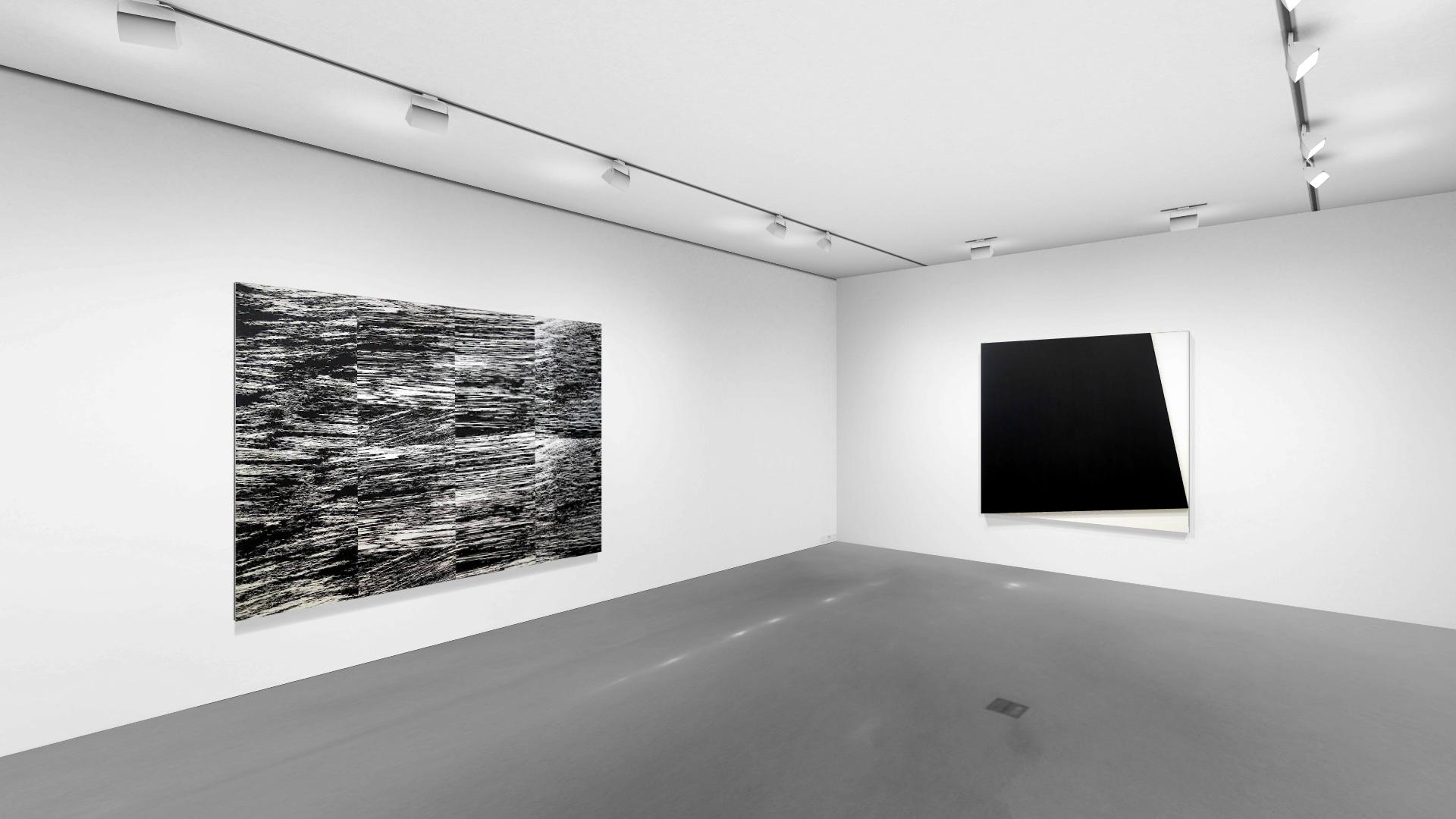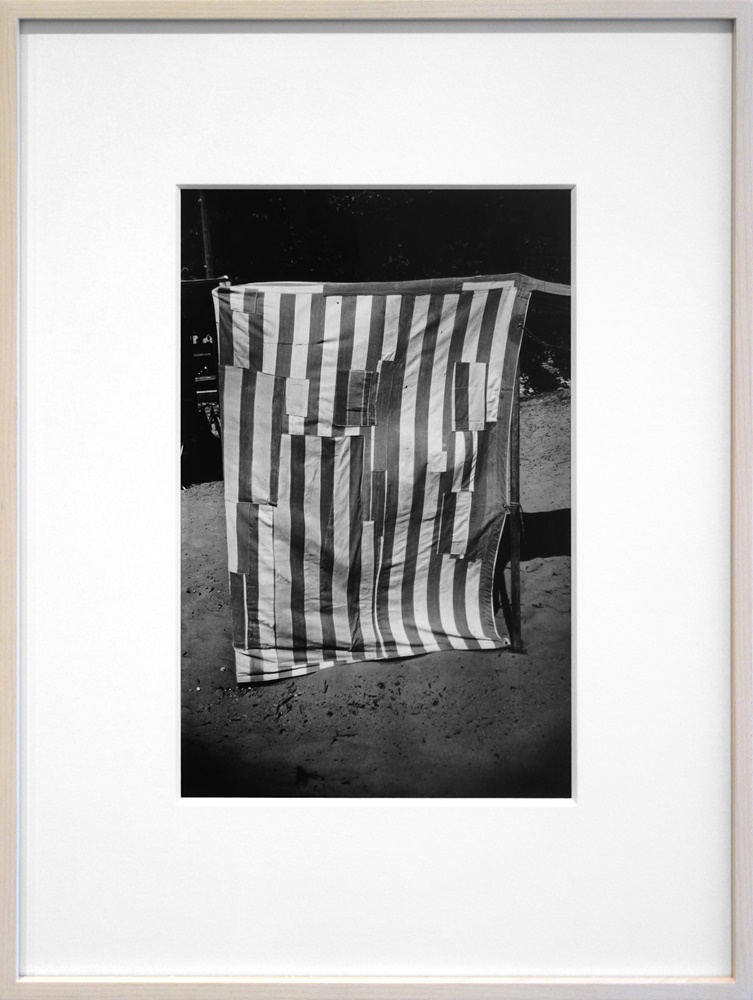On the occasion of its 10th anniversary, The FLAG Art Foundation is pleased to present Ellsworth Kelly: Black & White Works, curated by Jack Shear, President of the Ellsworth Kelly Foundation, on view February 23-May 19, 2018, on its 9th floor. The exhibition focuses on Kelly’s mastery in black and white, and includes rarely-seen drawings, paintings, photographs, and sculptures made in the first and last decade of the artist’s career.
Renowned for his use of bold, monochromatic planes of color, Ellsworth Kelly (1923-2015) created a fifth of his oeuvre in black and white. Art historian and critic David S. Rubin noted that Kelly is “[…] essentially a color painter who considers black and white to be colors.”[1] This limited, high-contrast palette allows for an increased focus on form and spacial relationships, which “intensifie[s] the abstraction by further removing the image from its natural coloration.”[2]
Available:
February 23, 2018 -
May 19, 2018
About:
Organized in intimate mise-en-scènes that focus on individual bodies of works, the exhibition presents 29 pieces that highlight the role of experimentation within Kelly’s practice. FLAG’s south gallery is solely dedicated to plein air drawings from 2005, which capture the dramatic rock formatio...
more >>
Organized in intimate mise-en-scènes that focus on individual bodies of works, the exhibition presents 29 pieces that highlight the role of experimentation within Kelly’s practice. FLAG’s south gallery is solely dedicated to plein air drawings from 2005, which capture the dramatic rock formations of Belle-Île, an island off the northwest coast of France. This suite of landscape drawings points to an improbable synchronicity between Kelly and Claude Monet (1840-1926), who made numerous paintings of the region’s dramatic coastline. These drawings are complemented by a series of photographs from 1950, on the corridor wall. Shot on a borrowed Leica camera in Meschers, France, the photographs explore the interplay of light, shadow, and pattern on stacks of bricks, beach cabanas, local vegetation, and architectural fragments. FLAG’s north gallery features three small studies from 1959 (York Study, Slip Study, and Falcon Study), each of which is marked by jagged-edge, curvilinear forms—compositions that portend Kelly’s later, relief paintings Two Blacks and White, 1993, Black Relief with White, 2005, and White Diagonal Relief, 2006, also on view. A painted aluminum model for the artist’s final sculpture Double Curves, 2015, explores the “interaction and interdependence”[3] of positive and negative space, while simultaneously creates the illusion of another iconic Kelly shape: the totem. Directly across the room, White Plaque: Bridge Arch and Reflection II, 2011, renders a negative space and its reflection into a physical form. Site-specificity is an unlikely concept when considering Kelly’s practice; yet time and again, the artist would return to certain locations to capture details of that place: an iron gate in Paris (Gate-Board, 1950); sunlight through a canopy of leaves (Charmettes II, 1956); and ripples on the Nile River (River II, 2004). Shear’s eclectic selection of disparate and little-known bodies of artwork emphasizes Kelly’s evolving and experimental creative practice: “Being involved in Ellsworth’s artistic and personal life for 32 years, I have a way of knowing the work differently than anyone else does. What I tried to do with the exhibition is to show the range of Ellsworth’s work and conceptual ideas. I hope to surprise.” FLAG’s Founder Glenn Fuhrman states, “Kicking off the celebration of FLAG’s 10th anniversary, I’m honored Jack Shear curated this personal tribute to Ellsworth Kelly. My wife Amanda and I have countless happy memories of visiting Jack and Ellsworth in Spencertown, NY, and we were both deeply affected by Ellsworth’s incredible art and the personal moments we shared with him and Jack. Ellsworth’s influence continues to be seen in a new generation of artists. I’m excited to expand on the dialogue with a simultaneous exhibition Painting/Object, on view on FLAG’s 10th floor, which includes new and recent works by Sarah Crowner, N. Dash, Sam Moyer, Julia Rommel, Erin Shirreff.” About: Ellsworth Kelly was born in Newburgh, New York in 1923 and died in Spencertown, New York in 2015. Following two years of studies at the Pratt Institute in Brooklyn, Kelly served in the Army during World War II from 1943 to 1945, and then resumed his education at the Boston Museum School. He returned to Paris in 1948 under the G.I. Bill and enrolled in the École des Beaux-Arts where he lived and studied for six years. Kelly’s first one-man exhibition was at the Galerie Arnaud in Paris in 1951. His retrospective exhibitions include Ellsworth Kelly at the Museum of Modern Art in 1973; Ellsworth Kelly Recent Paintings and Sculpture at the Metropolitan Museum of Art in 1979; Ellsworth Kelly Sculpture in 1982 at the Whitney Museum of American Art and Saint Louis Art Museum; and Ellsworth Kelly: A Retrospective in 1996 at the Solomon R. Guggenheim Museum, the Los Angeles County Museum of Art, the Tate, London and the Haus der Kunst in Munich. Kelly’s final work is Austin, a 2,715-square-foot building he designed with three colored glass wall installations, an 18-foot redwood totem, and a series of black-and-white marble wall panels. Originally inspired by Romanesque and Byzantine architecture encountered while traveling in France, his idea for the building was conceived in 1986. Commissioned by the University of Texas at Austin in 2015, Austin will be inaugurated into the Blanton Museum of Art’s permanent collection in February 2018. Form Into Spirit: Ellsworth Kelly’s Austin, a solo exhibition of related works and studies at the Blanton Museum of Art, will be held in conjunction with the inauguration of Austin. Kelly has received honorary doctoral degrees from Pratt Institute, Bard College, Harvard University, Williams College, the School of the Art Institute of Chicago, Brandeis University, and the Royal College of Art, London. Among numerous awards received are Japan’s Praemium Imperiale Award in 2000, Officier de la Legion d’Honneur presented by President of France Nicolas Sarkozy in 2009, and the National Medal of Arts presented by President of the United States Barack Obama in 2012. Jack Shear (b. 1953) is a photographer living and working in Spencertown, NY. His work emphasizes portraiture and nudes and is represented in permanent collections including the San Francisco Museum of Modern Art and the Whitney Museum of American Art. Exhibitions include solo shows at Yale University School of Art, and Le Musée Territorial de St Barthélemy. Curatorial projects include Drawn from Artists’ Collections at the Drawing Center, New York, NY, co-curated with Ann Philbin, Director of the Hammer Museum; Twice Drawn at the Tang Teaching Museum, co-curated with Director Ian Berry, and Back, a re-installation of the 19th Century sculpture collection at the Albany Institute for History and Art. An exhibition Borrowed Light: Selections from the Jack Shear Collection at the Tang Teaching Museum at Skidmore College featured works from a major gift of over 500 art historical photographs. A book of the same title was published in 2018 by Tang Skidmore, Delmonico, and Prestel. Shear serves on the Prints & Drawings Committee at the Museum of Modern Art, New York. He is a board member for the Foundation for Art and Preservation in Embassies and the World Monuments Fund. He is also the President of the Ellsworth Kelly Foundation. Join the conversation online and follow FLAG’s Instagram (@flagartfoundation) and Twitter (@FLAGartNYC), and use the #EllsworthKelly hashtag when posting. [1] Leonardo da Vinci, Treatise on Painting, cited in David S. Rubin, “Black and White Painting: An Historical Perspective,” in Black and White Are Colors: Paintings of the 1950s-1970s, ed. David W. Steadman and David S. Rubin, exh. Cat. Montgomery Art Gallery, Pomona College, Claremont, CA; Lang Art Gallery, Skripps College, Claremont CA (Claremont, 1979), pp. 5-39, esp. p. 17. [2] John Coplans, Ellsworth Kelly (New York, 1971), p. 21. [3] Ibid., p. 17.






